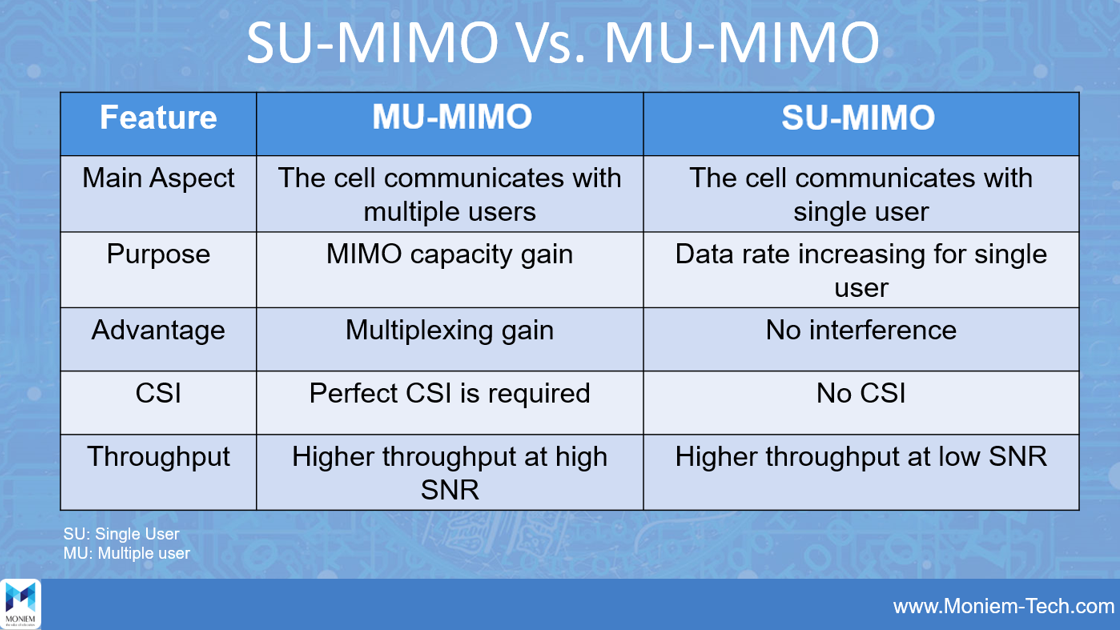In SU-MIMO transmission:
- The cell is serving only one user on a given time-frequency resource, maybe over multiple streams.
- The multiplexing gain is limited by the minimum of the number of transmitting and receiving antennas.
- Well supported in current standard specifications like LTE Release 8/9.
In MU-MIMO transmission:
- Multiple users are served in parallel over a given time-frequency resource by means of spatial multiplexing.
- The multiplexing gain scales with the number of transmit antennas, provided there are enough users in the cell.
- MU-MIMO networks are exposed to strong co-channel interference which is not the case for SU-MIMO ones.
Comparison between SU-MIMO and MU-MIMO

